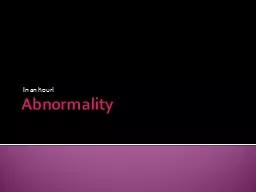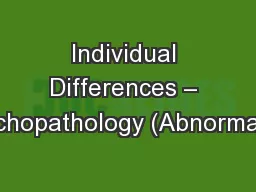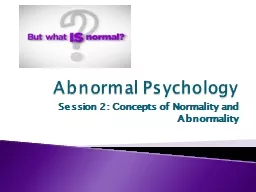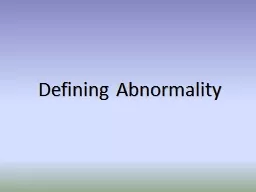PPT-Abnormality In an hour! Definitions of abnormality
Author : stefany-barnette | Published Date : 2018-11-04
Deviation from Social Norms Norms are the way that the majority are expected to behave in society Those that do not think or act the same as others in society break
Presentation Embed Code
Download Presentation
Download Presentation The PPT/PDF document "Abnormality In an hour! Definitions of a..." is the property of its rightful owner. Permission is granted to download and print the materials on this website for personal, non-commercial use only, and to display it on your personal computer provided you do not modify the materials and that you retain all copyright notices contained in the materials. By downloading content from our website, you accept the terms of this agreement.
Abnormality In an hour! Definitions of abnormality: Transcript
Download Rules Of Document
"Abnormality In an hour! Definitions of abnormality"The content belongs to its owner. You may download and print it for personal use, without modification, and keep all copyright notices. By downloading, you agree to these terms.
Related Documents














